Artist Interview: Esther Osayande
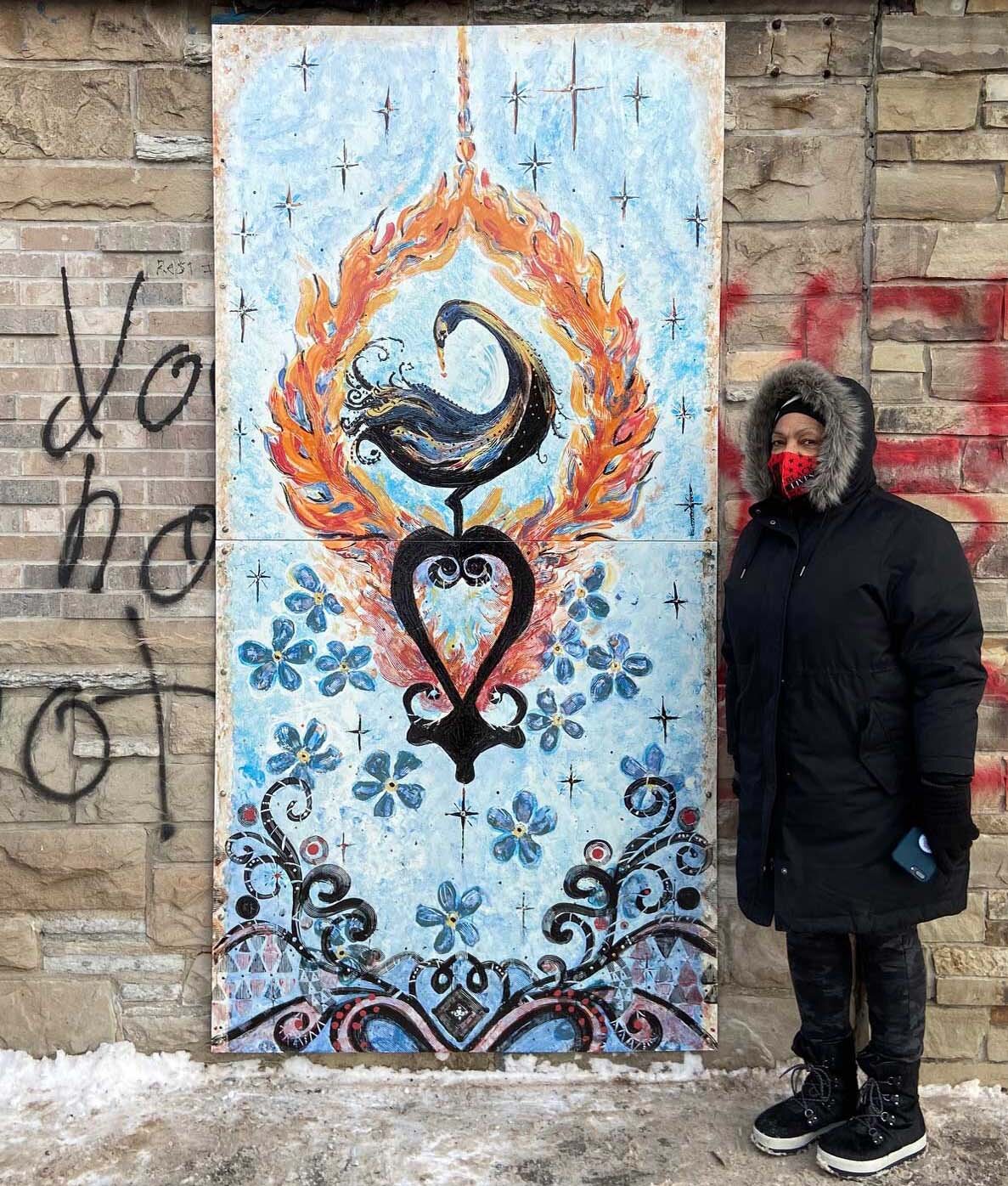
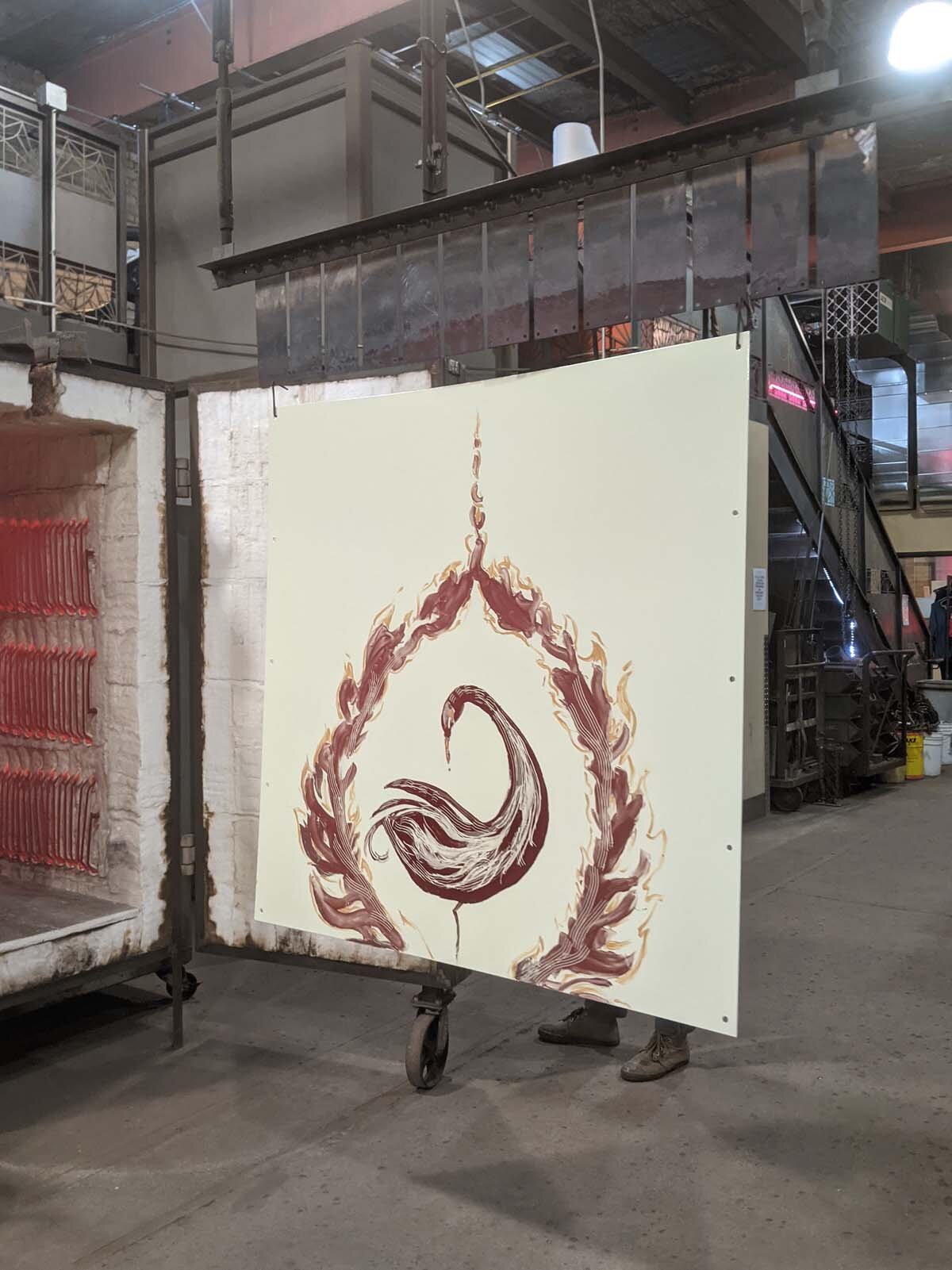

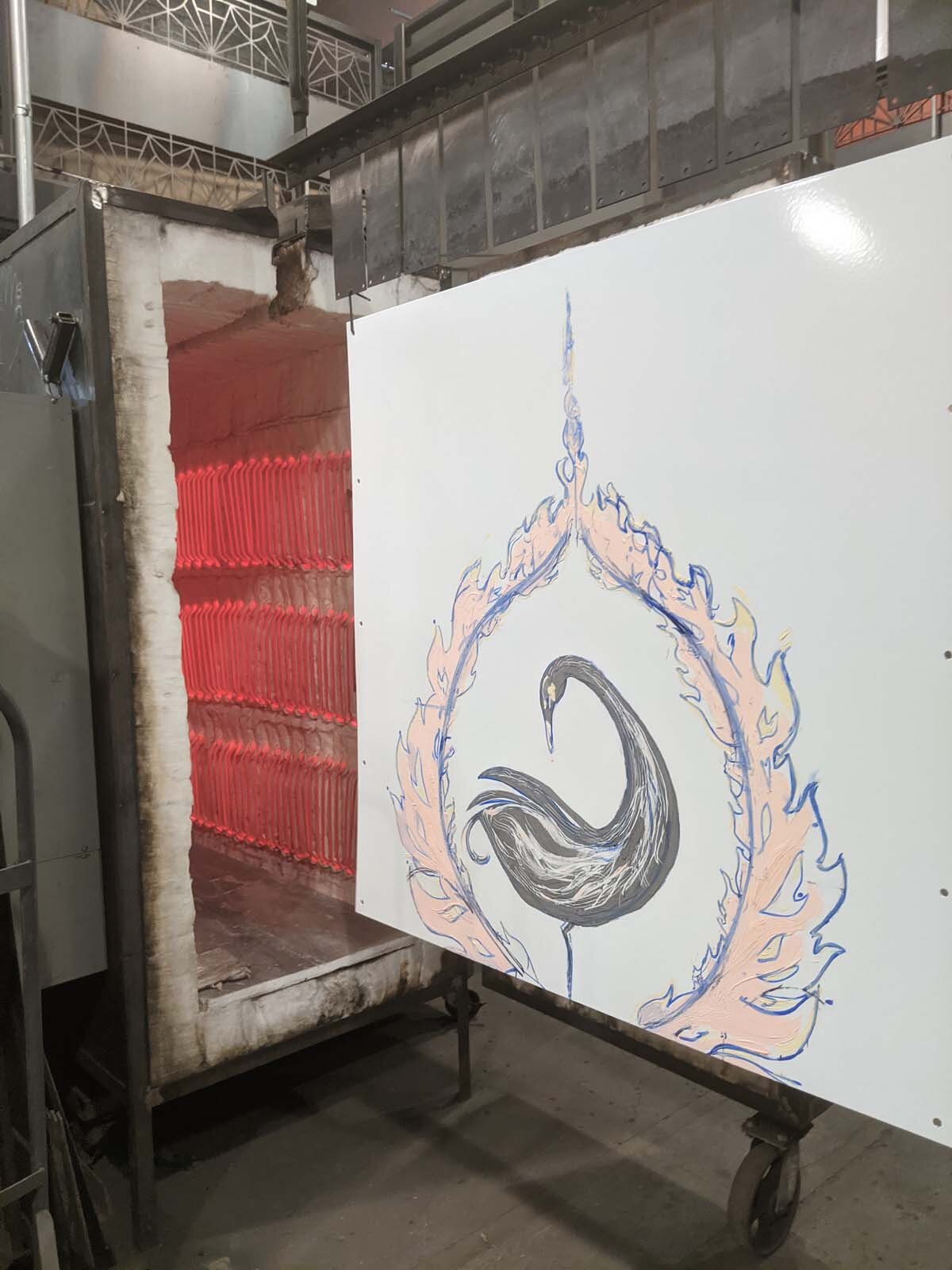

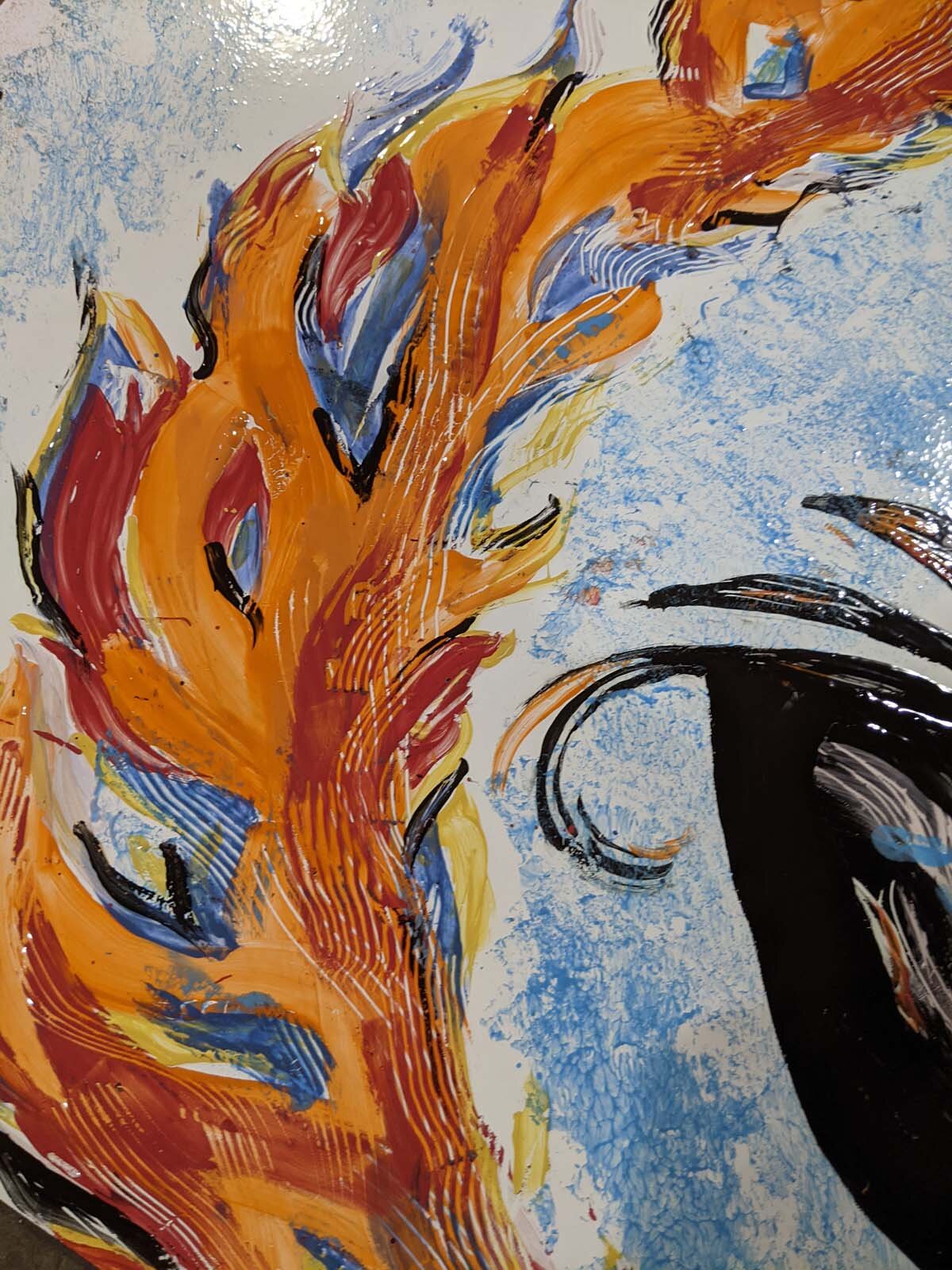
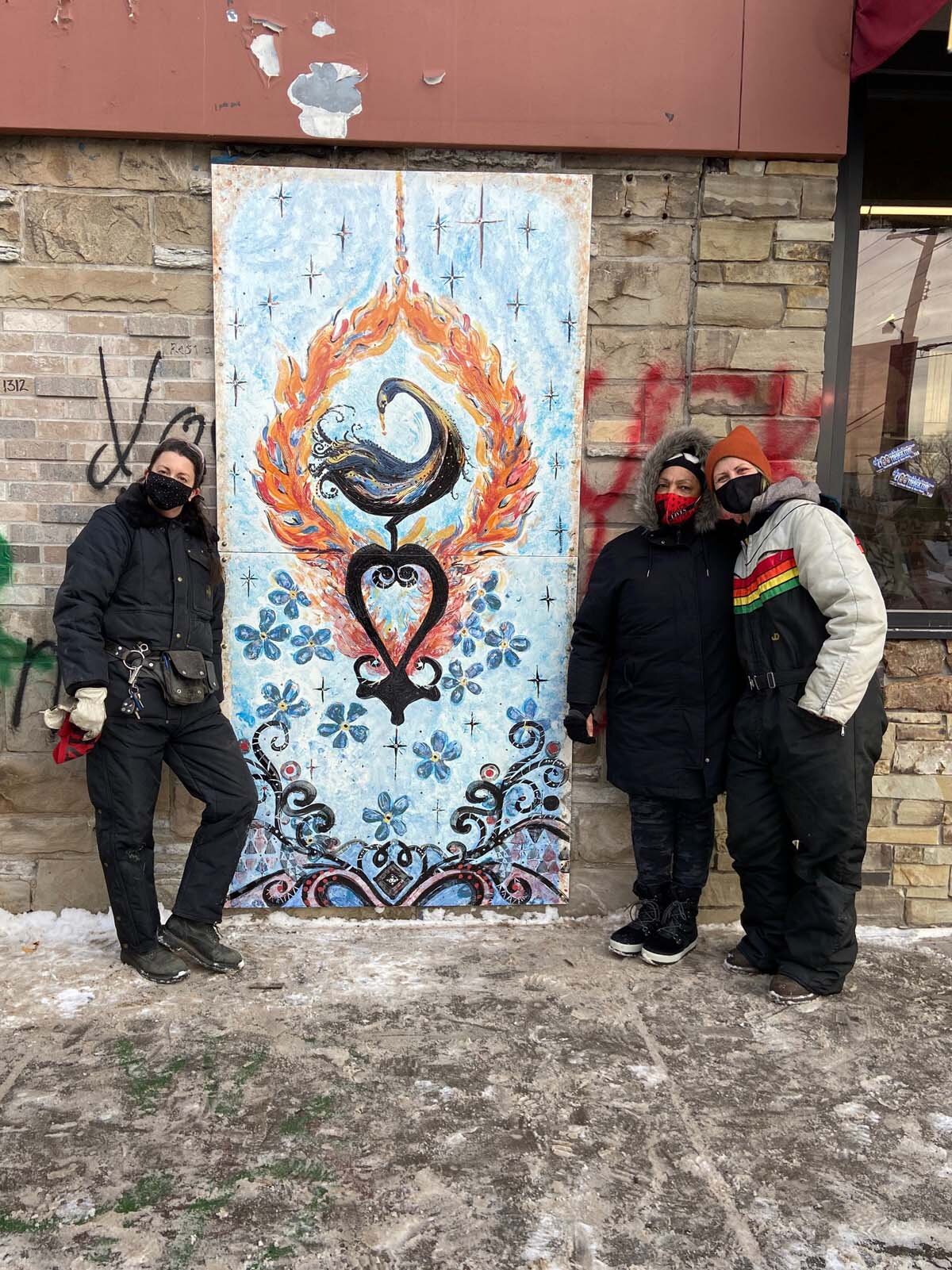
Esther Osayande recently installed her public artwork, Sankofa, as part of the "Illuminating Legacies" project with Pillsbury House + Theatre. She and a cohort of three other local African American artists met together virtually throughout 2020 as they developed their individual pieces, though none of them anticipated all of the challenges the year would bring.
“When we started off in January [2020] the Illuminating Legacies project’s focus was to highlight the positive impact of some of our POC neighbors on South Minneapolis’s history.” Esther continued, “But then in March, COVID just exposed so much injustice. And the same after the George Floyd incident, because that wasn’t new, but what was new was that it was a televised public execution. So, I think all of us artists just had to go deeper.”
Esther’s piece, Sankofa, is made of enamel paint fired on to steel panels. While she has worked in painting and illustration for many years, she first began working with enamel on metal during the John Biggers Seed Project in 2015. The John Biggers Seed project is a tribute to a short-lived but very impactful mural and public art engagement project from 1996 called Celebration of Life. Esther was one of the many artists who worked on that mural. She said, “When the City tore it down only 4 or 5 years later, in 2001, the community was really upset. There was a lot of anger. So then in 2015, Seitu Jones and Ta-coumba Aiken and a couple of national artists led a project to continue the legacy of the Celebration of Life Mural, but in a different media.”
“None of us started off with any idea of how to work with the enamel, and it is very tedious and time consuming. We started working on the panels in 2015 and finished with them in late 2018. It has to be primed and cleaned and then you have to do several firings of your layers of mineral paint. There are 300 panels in the project and I am thinking I probably did about 40 or 45 of the panels, over the course of the four years.”
While some artists didn’t love the new media, Esther found that working with enamel on steel suited her well. “With the enamel, you can’t just do what you want with it, you have to learn how to work within its bounds. But once you do, I just found I really took to it right away.” From that experience, Esther knew she would return to enamel for future projects, such as Sankofa.
When asked about her choice of imagery and the title, Esther said “For the imagery, it is the Sankofa bird and also the flames of the phoenix around it which represents rebirth. Sankofa is an old Akan tribal symbol from Ghana, meaning ‘If you don’t learn from the past you are doomed to repeat it’. And I think every culture really has this philosophy. You have to take the good and the bad from the past and learn from it, bring it forward to the present and make things better for the whole…for everybody.”
She chose to install the piece on the side of Cup Food’s building at George Floyd Square. “I knew I wanted it to be installed [at George Floyd Square] because that’s where the power is right now, and the spirit of what happened that day is always going to be there, so I had to get permission from Cup Foods. And I’m hoping that when people go by, they will see it, and there will be a plaque there explaining the significance of Sankofa and it will cause people to do some self-reflection. The truth is, if we’re going to make a change, it actually starts with us individually before it can happen collectively. So, I hope it brings some reflection and that people will understand what it means. I loved working with that project, and I think it made me look at myself even more. And I think that the community is starting to realize that art is really healing.”
As with the enameled panels from the John Biggers Seed project, Esther worked on Sankofa at CAFAC. “I didn’t want to stop working on it. I knew I only had a limited amount of time to work on it at CAFAC, but I just felt like a messenger, and really believed in the message behind it. Sometimes I would get frustrated if I made a mistake because it is so tedious, but then I was always excited to get back to it again. I’m so appreciative of CAFAC and I’m glad that more and more people are finding out about them. They’re so helpful to us as artists.”
For the rest of 2021, Esther is looking forward to applying for local public art commissions, as well as some exciting developments for the Roho Collective, of which she is a part. “And I am looking forward to doing some of my own work because while I have been focused on some of these commissions in the past few years, I haven’t been able to do as much of my own paintings. But If I do get some more projects with the City, enamel is always the first media that will come to my mind.”
